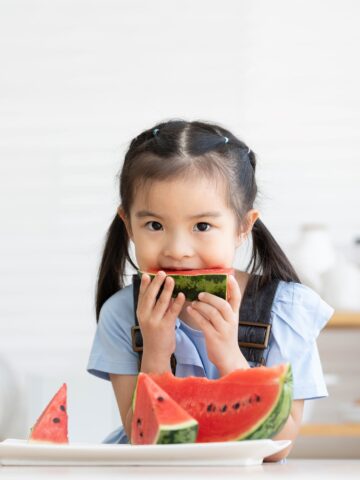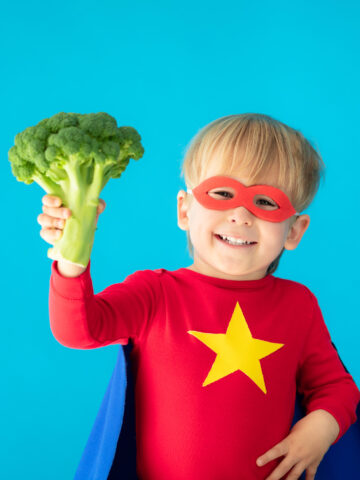By Shonda Brown, clinical dietitian at CHOC
Back-to-school is a busy and exciting time, and as a parent or guardian, you have likely checked off many to-dos to get your kids started off on the right foot:
- School supplies
- New shoes
- School clothes
- Orientation
The start of a new school year is a great time to try fresh new ideas with school lunches helping children form healthy habits, but perhaps you got caught up in the pandemonium of parent meetings, drop-offs and afterschool activities. Time has flown by —the school year is now in full swing — and new routines have already formed. Good thing it’s never too late!
I spoke with a few of my dietitian colleagues, who are also busy moms, to see what strategies they use to pack healthy lunches for their kids. Here are few strategies to try.
- Plan ahead. Stephanie Chang, a registered dietitian at CHOC, likes to plan lunches for the entire week. This helps her from grabbing whatever is easy or available that may or may not be healthy. Taking the weekend or an evening to prep foods for the week can save time. For example, wash and cut up vegetables, or cook chicken or eggs ahead of time, and store them in the refrigerator, ready to go as needed. Have staples on hand that your kids love to keep things easy. Gina O’Toole, registered dietitian at CHOC, keeps refried black beans in her cupboard. “My kids love refried black beans topped with cheese and corn, in a burrito, quesadilla or just to dip with chips,” she said.
- Pack the food you would like your child to eat. Most parents want their children to eat healthier, but many are timid when it comes to offering new foods. Gina encourages parents to never give up, as it may take multiple exposures of a new food before a child will eat it. Sharing meals together is an opportunity to model healthy eating. Children are more willing to try unfamiliar foods when they can learn and experience it in different ways. You can take your children shopping and allow them to pick out a new fruit or vegetable to try in their lunch that week, read a book about different cultures and cuisine or take a field trip to the farm.
- Make it fun. Children can help create new combinations of foods and name their recipe or creation. For example, avocado and pita chips might become “Monster Mash”, and crackers topped with peanut butter and raisins might be “Bug in the Mud.” Include a healthy and fun alternative to some of the popular food classmates are enjoying or just limit the portion size. Colleen Trupkin, registered dietitian at CHOC, occasionally packs a bubbly water instead of a popular fizzy juice drink for her son.
- Include variety. Joyelle Temming, registered dietitian at CHOC, always focuses on variety and color when packing her children’s lunches. She tries to pack something different each day, but does keep it simple. She rotates between grilled cheese, chicken nuggets, pasta, quesadillas, and meat and cheese with crackers. For color, she adds a fruit and vegetable with each entrée — this could be green cucumbers and red strawberries, or orange bell peppers with green grapes or kiwi.
- Keep it balanced. Colleen recommends using an age-appropriate bento box to help guide portion size and prevent liquids, like yogurt and apple sauce, from mixing in with dry foods. Look for one with enough sections to include foods from all the different foods groups as well as a smaller section to include a sweet treat.
To pack a balanced lunch, include each of the following:
- Grain –crackers, bread, tortilla, pasta, quinoa or rice
- Protein –beans, hummus, tofu, chicken, lunch meat, hard-boiled eggs, nuts or nut butter
- Fruit –grapes, apple slices, strawberries, blueberries or melon
- Vegetable –cucumber slices, bell pepper, carrot sticks or cherry tomatoes
- Healthy beverage –water or milk
In addition to the above elements of a healthy lunch, also consider including:
- Healthy fat –avocado, salad dressing, nuts or nut butter, mayonnaise or olives
- Calcium-rich food or beverage –yogurt, cheese, milk or a milk alternative
Peanut butter is a staple for many kids’ lunches, making it difficult to pack lunches if your child’s school has peanut or nut restrictions. Below are some examples of balanced meals that are nut and peanut free:
- Crackers with hummus and cheese cubes, cucumber slices. strawberries and water
- Turkey and avocado wrap with bell pepper strips, grapes and milk
- Tofu kabobs with cherry tomatoes and avocado, whole grain crackers, apple slices and milk
Get more expert health advice delivered to your inbox monthly by subscribing to the KidsHealth newsletter here.
Learn more about CHOC’s Clinical Nutrition Program
At CHOC, we specialize in providing a full continuum of pediatric nutrition services, including inpatient and outpatient services, depending on our patients’ needs.





